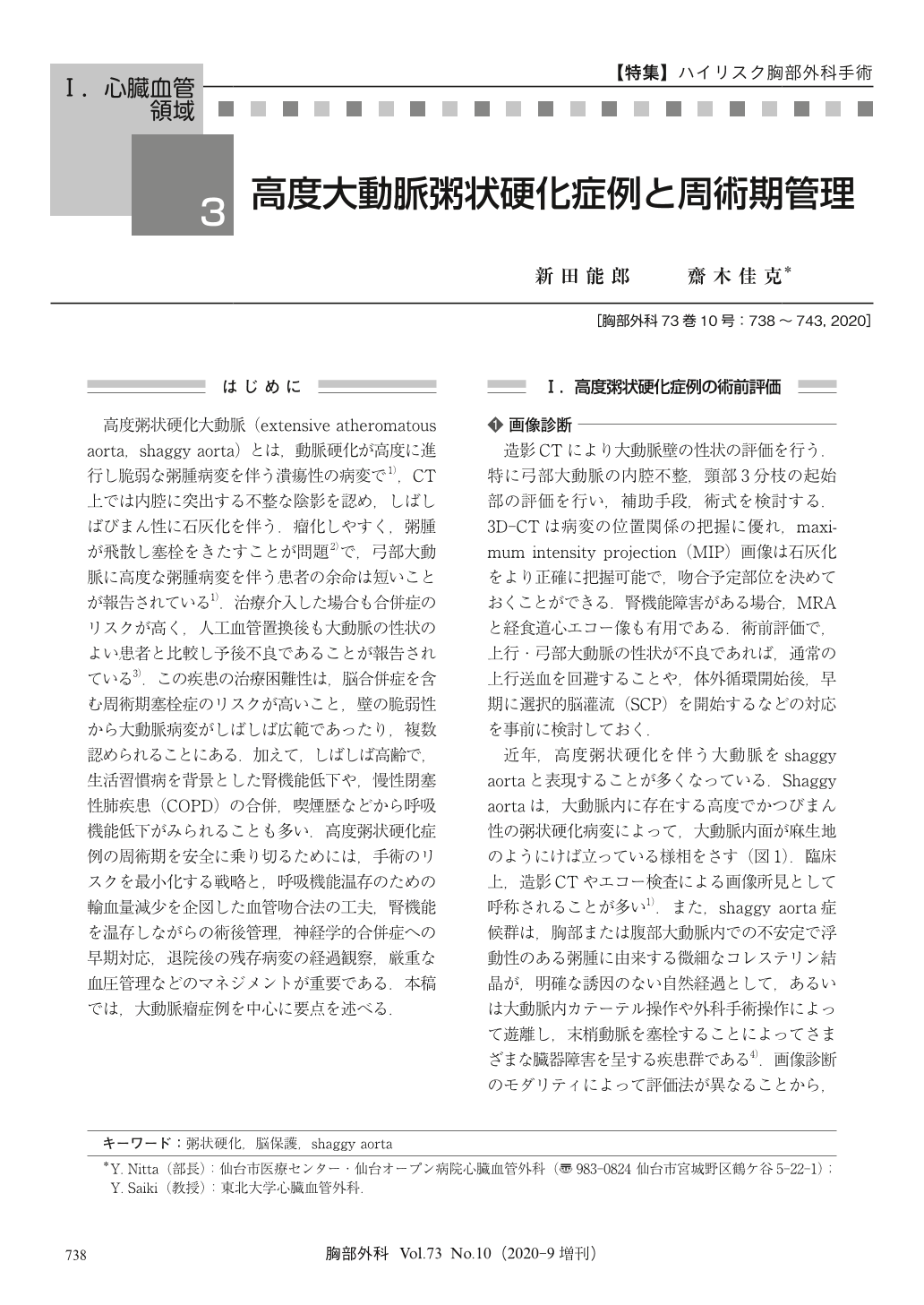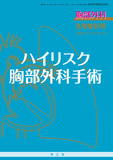Japanese
English
- 有料閲覧
- Abstract 文献概要
- 1ページ目 Look Inside
- 参考文献 Reference
高度粥状硬化大動脈(extensive atheromatous aorta,shaggy aorta)とは,動脈硬化が高度に進行し脆弱な粥腫病変を伴う潰瘍性の病変で1),CT上では内腔に突出する不整な陰影を認め,しばしばびまん性に石灰化を伴う.瘤化しやすく,粥腫が飛散し塞栓をきたすことが問題2)で,弓部大動脈に高度な粥腫病変を伴う患者の余命は短いことが報告されている1).治療介入した場合も合併症のリスクが高く,人工血管置換後も大動脈の性状のよい患者と比較し予後不良であることが報告されている3).この疾患の治療困難性は,脳合併症を含む周術期塞栓症のリスクが高いこと,壁の脆弱性から大動脈病変がしばしば広範であったり,複数認められることにある.加えて,しばしば高齢で,生活習慣病を背景とした腎機能低下や,慢性閉塞性肺疾患(COPD)の合併,喫煙歴などから呼吸機能低下がみられることも多い.高度粥状硬化症例の周術期を安全に乗り切るためには,手術のリスクを最小化する戦略と,呼吸機能温存のための輸血量減少を企図した血管吻合法の工夫,腎機能を温存しながらの術後管理,神経学的合併症への早期対応,退院後の残存病変の経過観察,厳重な血圧管理などのマネジメントが重要である.本稿では,大動脈瘤症例を中心に要点を述べる.
Extensive atheromatous disease of the thoracic aorta is a significant risk factor of lethal complications and remains an unsolved issue in patients undergoing cardiovascular surgery. The disease condition has been documented to be associated not only with high operative risk but also with relatively poor prognosis especially in patients with aortic replacement, due to the susceptibility to potential embolic events such as neurological deficits.
To achieve favorable outcomes after surgical intervention, precise preoperative evaluation and meticulous surgical planning are important. 3-dimensional computed tomography (CT) can reveal detailed aortic lesions, graftable anastomotic sites, suitable cannulation sites, risk score related to thoracic endovascular aortic repair (TEVAR). Despite the tendency that atheromatous lesions are extensive and multiple, a selected treatment would better be targeted only for clinically significant pathologic site to minimize the risks associated with surgical intervention. In addition, realistic anticipation and subsequent preparation for potential second operation should also be planned. As for a representative aortic surgery, total aortic arch replacement has been the most frequently performed procedure in Japan. When extensive atheromatous lesions are encountered around the arch and supra-aortic branches, rapid switching over to isolation of neck vessels and selective cerebral perfusion is recommended rather than solely relying on the right axillar artery perfusion. Retrograde cerebral perfusion may also be employed in a case with hostile cervical arterial lesions. Besides surgical strategy, peri-operative managements including preservation of renal and gastrointestinal functions are of paramount importance, and definitely influence the post-operative quality of life in patients with extensive atheromatous disease.

© Nankodo Co., Ltd., 2020


